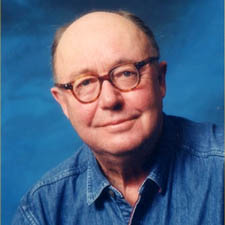| Revision as of 10:50, 30 August 2005 editJpbowen (talk | contribs)Extended confirmed users, Pending changes reviewers82,428 editsmNo edit summary← Previous edit | Revision as of 11:09, 30 August 2005 edit undoJpbowen (talk | contribs)Extended confirmed users, Pending changes reviewers82,428 editsmNo edit summaryNext edit → | ||
| Line 6: | Line 6: | ||
| Among his theoretical contributions is the development of the ] for ], generally known as the ]. His ] (coinvented with ]) ] forms the basis of the ] ] and ] system. He also codesigned the ] and ] ]. | Among his theoretical contributions is the development of the ] for ], generally known as the ]. His ] (coinvented with ]) ] forms the basis of the ] ] and ] system. He also codesigned the ] and ] ]. | ||
| He joined Cambridge's ], then called the Mathematical Laboratory, in ], became head of the lab in ], was made a ] in ] and remained with the lab until his retirement in ]. Needham then set up ]'s UK-based Research |
He joined Cambridge's ], then called the Mathematical Laboratory, in ], became head of the lab in ], was made a ] in ] and remained with the lab until his retirement in ]. Needham then set up ]'s UK-based ] in ]. He was also one of the founding ]s of ]. | ||
| He was elected to the ] in ], became a Fellow of the ] in ] and received a ] for his contributions to ] in ]. He also was a longtime and respected member of the ] and the ] Technical Committee on Security and Privacy. He was married to ]. | He was elected to the ] in ], became a Fellow of the ] in ] and received a ] for his contributions to ] in ]. He also was a longtime and respected member of the ] and the ] Technical Committee on Security and Privacy. He was married to ]. | ||
| He died of cancer in March 2003 at his home in ], ]. | He died of cancer in March ] at his home in ], ]. The ], in ], established an annual ] in his honour. | ||
| ==See also== | ==See also== | ||
Revision as of 11:09, 30 August 2005

Roger Michael Needham CBE FREng FRS (February 9, 1935–March 1, 2003) was a British computer scientist.
Needham began his undergraduate studies at the University of Cambridge in 1953, graduating with a B.A. in 1956. His Ph.D. thesis was on applications of digital computers to the automatic classification and retrieval of documents. He worked on a variety of key computing projects in security, operating systems, computer architecture (capability systems) and local area networks.
Among his theoretical contributions is the development of the Burrows-Abadi-Needham logic for authentication, generally known as the BAN logic. His Needham-Schroeder (coinvented with Michael Schroeder) security protocol forms the basis of the Kerberos authentication and key exchange system. He also codesigned the TEA and XTEA encryption algorithms.
He joined Cambridge's Computer Laboratory, then called the Mathematical Laboratory, in 1962, became head of the lab in 1980, was made a professor in 1981 and remained with the lab until his retirement in 1995. Needham then set up Microsoft's UK-based Research Laboratory in 1997. He was also one of the founding Fellows of Wolfson College, Cambridge.
He was elected to the Royal Society in 1985, became a Fellow of the Royal Academy of Engineering in 1993 and received a CBE for his contributions to computing in 2001. He also was a longtime and respected member of the International Association for Cryptologic Research and the IEEE Computer Society Technical Committee on Security and Privacy. He was married to Karen Spärck Jones.
He died of cancer in March 2003 at his home in Willingham, Cambridgeshire. The British Computer Society, in 2004, established an annual Roger Needham Lecture in his honour.
See also
- Maurice Wilkes (colleague)
- David Wheeler (colleague)
External links
- Information about Roger Needham provided by his wife
- Obit: Roger Needham, The Register, March 2, 2003
- Roger Needham Dies, Business Weekly, March 3, 2003
- Head of Microsoft's European research laboratory dead at 68, San Francisco Chronicle, March 5, 2003
- Roger Needham, Computer Security Expert, Dies at 68, The New York Times, March 6, 2003
- Microsoft's Needham dies from cancer, The Seattle Times, March 6, 2003
- Speech presenting Needham with an honorary degree, Loughborough University, July 13, 2001
- Roger Needham Lecture and Roger Needham Award, British Computer Society